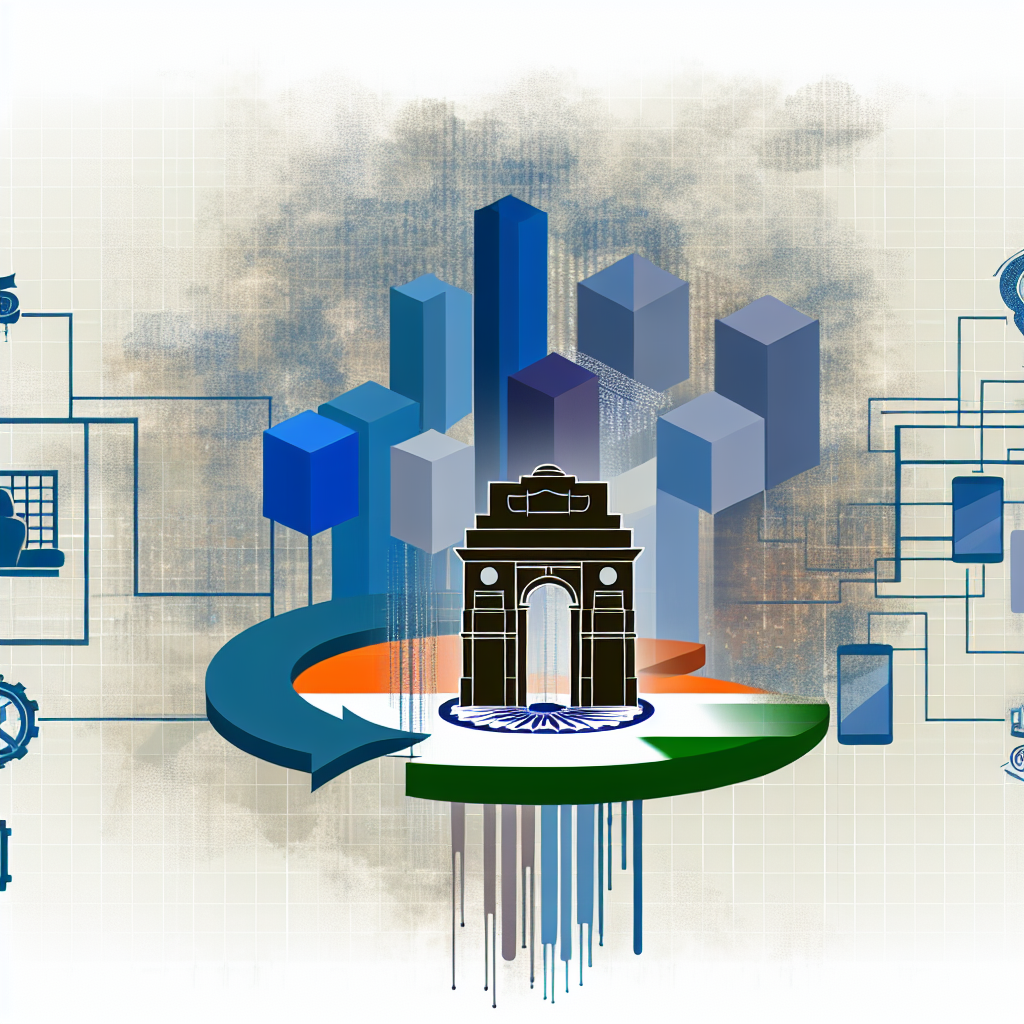
The global tech landscape is evolving rapidly, and recent policy decisions by former U.S. President Donald Trump have resurfaced as significant contributing factors. Although Trump’s policies were originally targeted towards tightening U.S.-China relations, the ripple effects of such shifts are now being felt across other nations, notably India. This article delves into how these policy adjustments could make India a more favorable environment for **Big Tech companies** and what that means for the future of technology in the country.
## The Changing Global Tech Landscape
In the past decade, **Big Tech companies** like Google, Amazon, Facebook, and Microsoft have positioned themselves as powerful forces in the global market. However, their dependence on markets such as the U.S. and China has presented challenges in recent years — whether due to strained geopolitical relations or regulatory crackdowns.
Under Trump’s administration, several policies were enacted to curb China’s growing influence in both the tech and economic space. These included **tariffs, tech bans, and data regulations**, which served as a deterrent for U.S.-based tech giants from further engaging with Chinese entities. Consequently, countries like India are emerging as prime candidates to replace China for **Big Tech deployment** in terms of talent, market reach, and growth opportunities.
### Why India Could Benefit from Trump’s Policy Shift
India is one of the few countries that have the potential to significantly benefit from Trump’s tech policy redirection. Here are the key reasons:
#### Favorable Demographics and Market Size
As of 2023, India holds a prominent position as the world’s second-most populous country, with over 1.4 billion people. This massive population base is critical for **Big Tech companies** looking to expand their user base.
– Expanding middle-class markets provide a growing consumer base for digital services, e-commerce, and fintech solutions.
– India is also experiencing a **digital revolution** through initiatives like Digital India, which aims to empower citizens through technology, improving accessibility.
#### Growth of the Startup Ecosystem
India’s **startup ecosystem** has been flourishing for years. Mumbai, Bangalore, and Hyderabad are emerging as **major tech hubs**, providing a fertile ground for **Big Tech companies** to expand operations. Several U.S.-based companies have already established R&D centers and local headquarters here.
– **Investments in local startups:** Several major players have already invested in Indian tech startups, including Google’s $10 billion Digital India investment fund.
– **Talent acquisition:** India is home to a vast pool of engineers, developers, and IT professionals, making it an attractive destination for talent sourcing.
### Trump’s Tough Stance on China: The Trigger
Trump’s hardline policies towards China have impacted supply chains, trade, and tech investments. With growing tensions between the U.S. and China, **Big Tech** companies find themselves being pushed to seek newer markets for resource allocation and product development.
– U.S.-China trade war: The tariffs imposed under Trump made tech exports from China costly, thereby prompting companies to rethink their offshore production models.
– Exodus from Chinese markets: Trump’s policies also included restrictions on Chinese tech companies like Huawei and ZTE, forcing U.S. companies like Google and Apple to make difficult decisions about their own foothold in China.
As China becomes more challenging for U.S. businesses, India emerges as a natural alternative due to its tech-savvy population, low labor costs, and favorable government policies.
### India’s Government Policies: Aiding Big Tech Expansion
The Indian government, realizing the potential of tech-driven growth, has begun implementing policies that can directly aid **Big Tech companies**, especially in light of Trump’s moves.
#### Easing Regulations
The **Indian government** has been proactive in updating its regulatory landscape to welcome foreign investment, particularly from **U.S.-based tech companies**. Some recent government actions include:
– **Liberalized Foreign Direct Investment (FDI)** norms for technology companies, making it easier for global companies to invest in critical areas like e-commerce, telecom, and social media platforms.
– **Data localization laws:** While slightly restrictive, these laws benefit India as more tech firms now have a significant presence on Indian soil to oversee and adhere to rules.
#### Making India Self-Reliant
PM Narendra Modi’s **Aatmanirbhar Bharat** (“Self-Reliant India”) and **Make in India** initiatives are aligned with the evolving geopolitical situation. These programs aim to bolster manufacturing, further adding to the appeal for **Big Tech** companies to shift manufacturing and data centers from China to India.
By promoting **local production facilities, digital infrastructure,** and **skilled manpower**, India becomes a key destination for global tech brands to develop, test, and deploy their next-generation technologies.
### Challenges to Overcome
While the policy environment seems favorable, it’s important to note that moving a supply chain or establishing new markets is rarely smooth. **Big Tech companies** face hindrances such as regulatory roadblocks, **data privacy concerns**, and local competition in India.
– **Skilled Workforce:** Although India boasts a large pool of IT professionals, **upskilling** has become essential to meet the latest demands in fields like **AI, cloud,** and **machine learning**.
– **Local Competition:** Indian giants like Reliance Jio and Tata Consultancy Services (TCS) have substantial market power, potentially acting as powerful competitors or partners for U.S. companies.
Still, the long-term outlook remains optimistic, especially with initiatives like **PLI (Production Linked Incentives)** to encourage domestic manufacturing.
## The Winning Edge for Big Tech in India
As **U.S.-China relations** remain uncertain, **Big Tech** companies have the opportunity to pivot towards India in key ways. Here’s how companies can harness this shift to their advantage:
- **Leveraging local partnerships**: Forming joint ventures with established players in India like Jio or Flipkart to tap into existing user bases.
- **Creating localized content**: Customizing products for India’s diverse population to strengthen market penetration.
- **Investing in infrastructure**: Building Indian data centers to overcome concerns related to cybersecurity and data sovereignty.
## What Lies Ahead?
It is clear that **Trump-era policies** reshaped the global tech landscape and redirected focus towards developing alternative markets outside China. In this scenario, India stands tall as a likely winner, capable of welcoming the resources, services, and attention of **Big Tech** companies.
The overall consequence of this relocation could lead to:
– **Job creation** across India’s tech industry.
– **Increased investment** in cutting-edge technologies like artificial intelligence and blockchain.
– **Innovation** at the core level, thereby pushing India higher up the global technology echelons.
## Conclusion
While the policies established under President Donald Trump were primarily designed to curb China’s dominance, the wider impact of these regulations has made India an **attractive option** for **Big Tech companies**. India’s quest to be the next tech-superpower is now coming to fruition, riding on a combination of international strategic shifts, governmental support, and a burgeoning local market.
As long as India can successfully overcome its longstanding challenges, it may very well stand at the forefront of the next phase of global tech development, making it an ideal environment for **Big Tech** companies to invest and grow.
##### _Stay tuned to this space for more in-depth analysis of industry trends and insights!_
